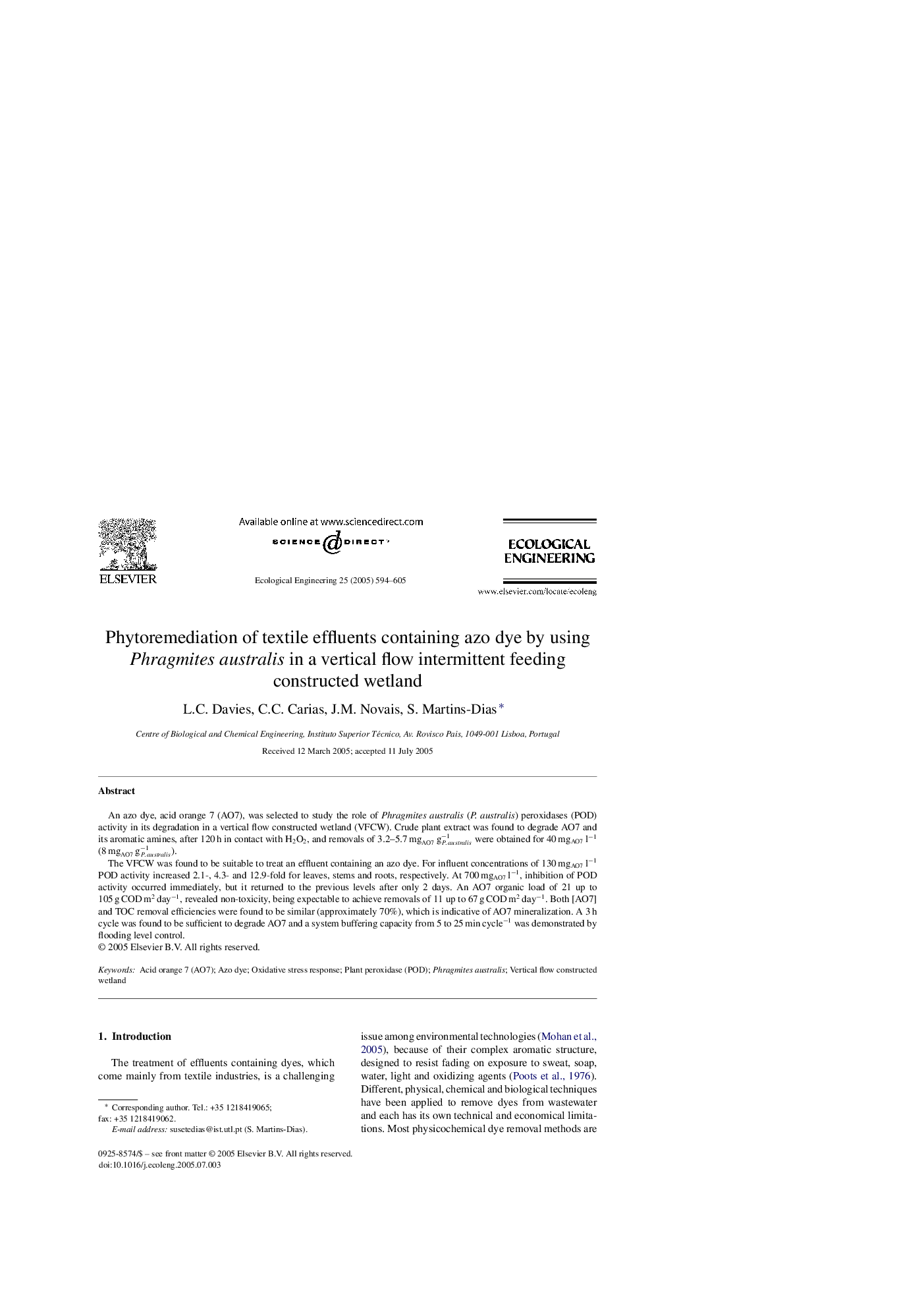| Article ID | Journal | Published Year | Pages | File Type |
|---|---|---|---|---|
| 9447517 | Ecological Engineering | 2005 | 12 Pages |
Abstract
The VFCW was found to be suitable to treat an effluent containing an azo dye. For influent concentrations of 130 mgAO7 lâ1 POD activity increased 2.1-, 4.3- and 12.9-fold for leaves, stems and roots, respectively. At 700 mgAO7 lâ1, inhibition of POD activity occurred immediately, but it returned to the previous levels after only 2 days. An AO7 organic load of 21 up to 105 g COD m2 dayâ1, revealed non-toxicity, being expectable to achieve removals of 11 up to 67 g COD m2 dayâ1. Both [AO7] and TOC removal efficiencies were found to be similar (approximately 70%), which is indicative of AO7 mineralization. A 3 h cycle was found to be sufficient to degrade AO7 and a system buffering capacity from 5 to 25 min cycleâ1 was demonstrated by flooding level control.
Keywords
Related Topics
Life Sciences
Agricultural and Biological Sciences
Ecology, Evolution, Behavior and Systematics
Authors
L.C. Davies, C.C. Carias, J.M. Novais, S. Martins-Dias,
